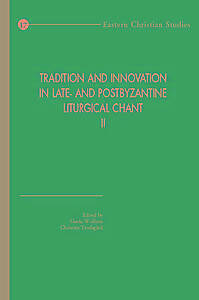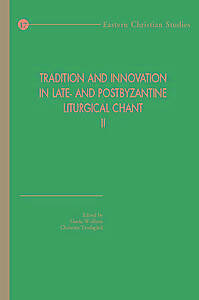
- Afhalen na 1 uur in een winkel met voorraad
- Gratis thuislevering in België vanaf € 30
- Ruim aanbod met 7 miljoen producten
- Afhalen na 1 uur in een winkel met voorraad
- Gratis thuislevering in België vanaf € 30
- Ruim aanbod met 7 miljoen producten
Zoeken
Tradition and Innovation in Late- And Postbyzantine Liturgical Chant II
Proceedings of the Congress Held at Hernen Castle, the Netherlands, 30 October - 3 November 2008
€ 60,00
+ 120 punten
Omschrijving
What is the relation between the Greek ecclesiastical chant traditions of today and Byzantine chant? That question can only be answered through a meticulous study of the transmission and transformation of both the melodies, the genres, and the whole musical culture of Late Byzantium and the subsequent centuries. This book presents a handful of studies focusing on both the development of new musical styles, such as the ornamented Kalofonia ('Beautiful sound'), and on the education of the cantors, the psaltai. The role of the master cantors, the maistores, their teachings, treatises, traditions, innovations, compositions, and the various modes of interpretation (exegesis) are among the topics covered by this collection of papers, written by specialist scholars of Byzantine chant history.
Specificaties
Betrokkenen
- Uitgeverij:
Inhoud
- Aantal bladzijden:
- 328
- Taal:
- Engels
- Reeks:
- Reeksnummer:
- nr. 17
Eigenschappen
- Productcode (EAN):
- 9789042927483
- Verschijningsdatum:
- 5/03/2013
- Uitvoering:
- Paperback
- Formaat:
- Trade paperback (VS)
- Gewicht:
- 254 g

Alleen bij Standaard Boekhandel
+ 120 punten op je klantenkaart van Standaard Boekhandel
Beoordelingen
We publiceren alleen reviews die voldoen aan de voorwaarden voor reviews. Bekijk onze voorwaarden voor reviews.










